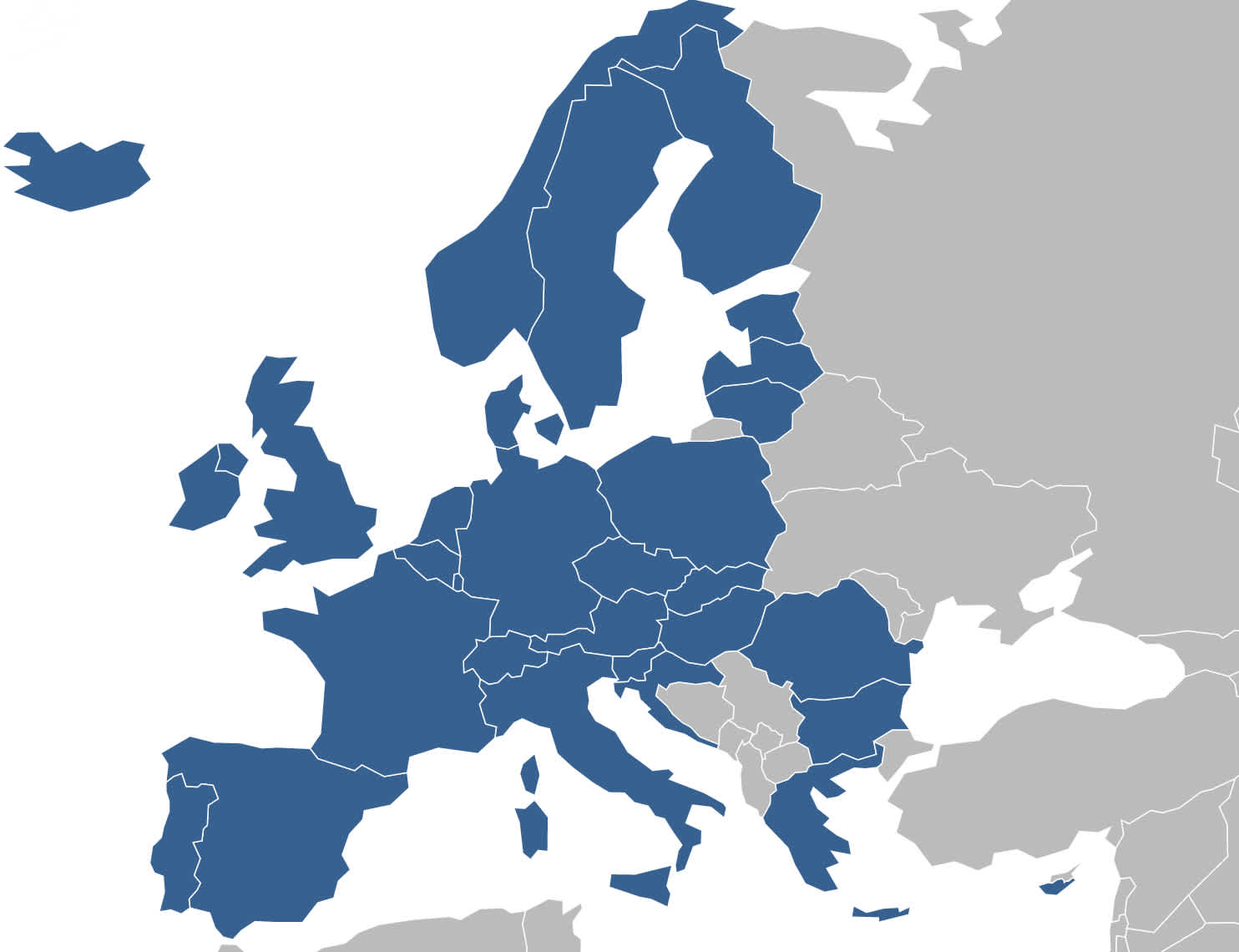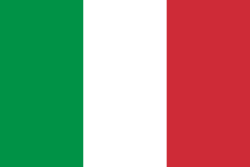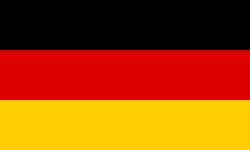

Rob's mission is to educate businesses on the current payments landscape and the range of options that can be implemented to optimise their payment processes. As a former small business owner, Rob understands the issues that continually complicate payment collection and creates content to help businesses navigate the available solutions to these problems. Connect
Last edited Aug 2022 — 9 min read
Taking payments from customers in a European country has traditionally been a confusing affair. With different payment habits, country-specific terminology and 24 different languages to operate in, you might find it rather daunting when expanding your business across Europe.
With the arrival of the new Single European Payments Area (SEPA) , taking payments from across Europe has been made a lot easier. This guide will give you an overview of the payment methods used in European countries . We'll also explore some of the most popular payment methods on a country-by-country basis.
The best payment method for your business will depend on the type of payments you are collecting as well as the country you’re collecting payments from.
Bank transfers are typically used across much of Europe to collect payments in business to business transactions. They can also be used to collect payments from individuals although this is usually only for large one-off amounts.
The cost of making cross-border bank transfers can vary greatly for non-Eurozone currencies. However, with the arrival of the SEPA credit transfer scheme it‘s now much cheaper to make transfers in the Eurozone.
You may still be subject to currency exchange fees if customers are transferring Euro-denominated payments to a GBP account. To reduce your exposure to currency exchange fees, you could either open a Euro-denominated account at your UK bank or use a peer-to-peer platform such as Wise or Kantox .
If you’d like to use bank transfer to collect payments from customers in Europe, you’ll need to provide your customers with an International Bank Account Number (IBAN) and Business Identifier Code ( BIC, also known as a SWIFT code ). You’ll need to do a bit of work to reconcile the received payments with your books. Billing software, such as Sage or Kashflow , can often do this for you automatically. Alternatively, you could manually match the payments on your bank statement to invoices that have been issued to customers.
Credit cards can be an easy and convenient way of collecting money from customers across Europe.
The main disadvantage of accepting credit card payments is high fees: you’ll typically be charged 2-4% of each payment plus a fixed fee. There’ll also usually be additional fees for collecting international payments and you will need to have a merchant account in a major trading country. Therefore if you are collecting payments within the SEPA area you may find an alternative payment method more cost effective.
If you’d like to accept credit card payments on your website, you’ll either need to integrate with a payment service provider (PSP) or a payment processor. Examples include Stripe and Braintree. See our recurring payments guide for more information.
E-money is a digital equivalent of cash but is stored on an electronic device or remotely on a server e.g. in a payment account on the internet. E-money providers like PayPal - also referred to as 'digital wallets' - are a popular choice for businesses working in multiple countries as it is accepted in all countries.
Despite a fast set-up and broad reach across Europe, e-money payment methods have three main drawbacks:
If you’d like to offer an e-money payment method, we’d suggest considering it as a complementary payment option for your website. We would advise also accepting alternative payment methods like credit card or Direct Debit. Businesses who only accept payments via e-money methods like PayPal typically have poor customer conversion and experience.
While Direct Debit is a payment method used across most of Europe, until earlier this year, separate schemes existed within each country. As such, it wasn’t possible to collect cross-border payments using Direct Debit. With the advent of the SEPA Direct Debit scheme , it’s now as easy to take Direct Debit payments from across the 18 Eurozone countries as it is within the UK. GoCardless provides multiple benefits for businesses collecting SEPA payments from their European customers.
SEPA Direct Debit is particularly great for invoicing and regular subscriptions. It’s a popular choice for recurring payments as it’s cheap, safe and convenient. Customers living in most European countries are also highly familiar with Direct Debit payments.
Direct Debit isn’t suitable if you work with high-value goods or need payments to be cleared immediately. Within the SEPA Direct Debit scheme, funds will take several days to clear and are liable to an eight-week “no questions asked” refund period.
If you’d like to collect payments through SEPA Direct Debit, there are several ways you’re able to do this . If you are currently collecting Direct Debit payments yourself via a bank you’ll be required to complete significant legal and financial paperwork including applying for a Creditor Identifier. You’ll also need to make changes to processes, messaging formats and bank account details. If you’re using a Direct Debit bureau or management software provider, you’ll need to check whether your provider offers payments outside of the UK. If they do these will typically be at an additional cost.
With GoCardless, you can collect and manage your payments using a simple online tool. You can also integrate with our REST API at no extra cost. Fees are also the same no matter where your customers are based. Sign up today to give it a try.
GoCardless saves merchants time, money & stress collecting SEPA payments.
We haven’t looked at cheques in detail as most countries are phasing them out. However, they are still popular in some countries such as France and Italy. Nevertheless, we’d suggest considering another payment method for cross-border transactions. While technically possible, banks often charge prohibitive fees for cross-border and foreign-currency cheques.

Across Europe, the most popular or most convenient payment methods can differ on a country-by-country basis. As a merchant looking to take payments in multiple European countries, you'll therefore need to be aware of country-by-country differences when deciding on which payment methods to offer. For instance, in countries such as Germany, card payments account for a very low market share. If you were only to accept card payments in Germany, you could miss out on a large number of customers.
It's also important to be aware that the European payments landscape has recently changed. Until now, lower cost payment methods such as Direct Debit and Bank Transfer have only been available within domestic markets. With the arrival of SEPA, these types of payments can now be taken just as easily across Europe as domestically. These options are therefore likely to grow rapidly in popularity, particularly if providers can offer coverage across Europe.
In this section, we'll run you through the most popular payment methods in Ireland, France, Italy, Germany and the Netherlands.

There are three main options for taking payments from customers in Ireland:
While you need to understand local preferences and therefore will want to consider offering card payments, you will also need to consider which of the options suits your business best - particularly in light of the SEPA schemes and newer providers which make Direct Debit more accessible.
For e-commerce or other businesses where you need instant payment credit card is probably your best payment option in any case. However, if you collect regular or recurring payments you might want to consider whether with easier access and low cost payments across Ireland and the Eurozone Direct Debit could suit your business.

There are five main options for taking payments from customers in France:
If you need to take instant payments, in France e.g. in e-commerce, you will want to consider Carte Bancaire. However, if you are taking payments for invoices or other recurring payments you may want to consider whether Direct Debit might be a better option than cheque - particularly if you plan to take payments outside of France (or are based outside of France) as banking cross-border cheques can be prohibitively expensive.

There are five main options for taking payments from customers in Italy:
While you should consider Italian payment preferences when choosing a payments option you should also consider which option suits your business best. For e-commerce or other businesses where you need instant payment credit card or PayPal are great options in Italy as your customers will be familiar with these. However, if you collect regular or recurring payments you might want to consider whether adding Direct Debit as a payment method could help you cut costs and admin particularly in light of the SEPA schemes and newer providers which make Direct Debit easier to use and more suited for recurring payments.

Payments are traditionally taken in Germany via bank account-based payments like bank transfers and ELV (German Direct Debit). There are six main options:
Unlike most of Europe, in Germany Direct Debit and bank transfers are the main payment options - both on and offline - so you should consider how you can use these payment options in your business. However, if you plan to collect payments from other countries in Europe you may want to consider whether a SEPA Direct Debit provider could be for you. If you also want to take payments outside of Europe you will also want to use card payments but may want to choose an alternative option for customers within Germany.

There are three main options for taking payments from customers in the Netherlands:
Similarly to Germany, Direct Debit and bank transfers are the main payment options in the Netherlands so you should consider how you can use iDeal, Incasso or other Direct Debit options in your business. If you plan to collect recurring payments you may want to look at newer providers like GoCardless which make Direct Debit accessible to companies of all sizes. If you also want to take payments outside of Europe you will also want to use card payments but may want to ensure you choose an alternative option for within the Netherlands.
Read our SEPA user guide or our learn more about our SEPA direct debit service .